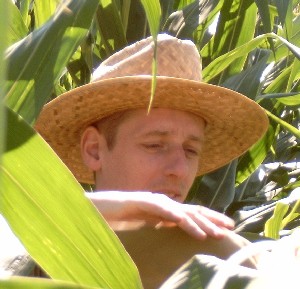| leipner photosynthesis consulting |
leipner photosynthesis consulting |
|
| home - services - applications - background - about lpc | ||
| contact
leipner photosynthesis consulting email: leipner@photosynthesis.ch |
About Why leipner? I have a longstanding experience within the field of applied plant biology as researcher at the University of Giessen (Germany), ETH Zurich (Switzerland) and University of Essex (UK). My strength is my in-depth knowledge of the basic processes of photosynthesis and my broad experience in plant breeding and crop science. Photosynthesis is the process in plants that converts carbon dioxide and water into organic compounds and oxygen using the energy from light. The rate of photosynthesis responds very fast to changes in environmental conditions, to biotic stresses and to many chemical compounds. Furthermore, inter- and intraspecific variation exists for photosynthetic characteristics. Since the rate of photosynthesis can be measured non-invasively, it is a very suitable trait to study effects of adverse conditions on plants or to differentiate genotypes. Moreover, methods were developed that allow a fast characterization of photosynthesis and, therefore, are very suitable for high throughput phenotyping. Why consulting? The
determination of the photosynthetic activity is not very difficult.
However, in order to get meaningful results, the experimental set-up, the
conditions during measurement and the settings of the equipment have to be
carefully chosen, which requires a lot of experience, in particular, to
avoid potential pitfalls. Furthermore,
state-of-the-art equipment is expensive and needs a long practice to
obtain reliable data.
|
selected
publications
Massacci et al. (2008) Response of the photosynthetic apparatus of cotton (Gossypium hirsutum) to the onset of drought stress under field conditions studied by gas-exchange analysis and chlorophyll fluorescence imaging. Plant Physiology and Biochemistry 46: 189-195. [link] Jompuk et al. (2005) Mapping of quantitative trait loci associated with chilling tolerance in maize (Zea mays L.) seedlings grown under field conditions. Journal of Experimental Botany 56: 1165-1175. [link] Fracheboud et al. (2004) Genetic analysis of cold-tolerance of photosynthesis in maize. Plant Molecular Biology 56: 241-253. [link] Sinsawat et al. (2004) Effect of heat stress on the photosynthetic apparatus in maize (Zea mays L.) grown at control or high temperature. Environmental and Experimental Botany 52: 123 - 129. [link] Fracheboud & Leipner (2003) The application of chlorophyll fluorescence to study light, temperature, and drought stress. In Practical Applications of Chlorophyll Fluorescence in Plant Biology (eds J.R. DeEll & P.M.A. Toivonen), pp 125-150. Kluwer Academic Publishers, Dordrecht. Leipner et al. (2001) Primary sites of ozone-induced perturbations of photosynthesis in leaves: identification and characterization in Phaseolus vulgaris using high resolution chlorophyll fluorescence imaging. Journal of Experimental Botany 52: 1689-1696. [link] Fracheboud et al. (1999) Chlorophyll fluorescence as a selection tool for cold tolerance of photosynthesis in maize (Zea mays L.). Journal of Experimental Botany 50: 1533-1540. [link] Leipner et al. (1999) Effect of growing season on the photosynthetic apparatus and leaf antioxidative defenses in two maize genotypes of different chilling tolerance. Environmental and Experimental Botany 42: 129-139. [link] |
| © 2010 jl |


